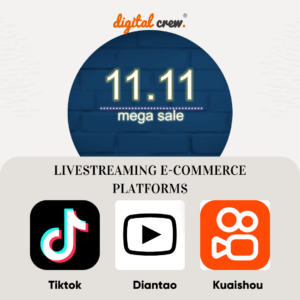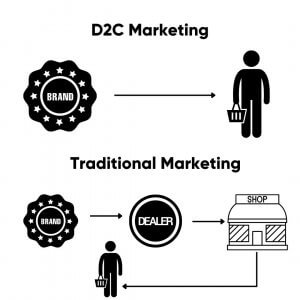It’s no secret that e-commerce is very big in China, and that it is also growing rapidly. It’s also very important for marketers to be aware of the massive growth in popularity of mobile commerce (or m-commerce) amongst China’s internet shoppers.
According to a report published by Tech in Asia, 89% of internet users now use mobile devices to access the internet. In addition, approximately half of all e-commerce is performed through mobile devices, with some market watchers expecting this to grow to around 72% by 2019 if current trends are anything to go by.
M-commerce in China is largely dominated by Alibaba’s commerce businesses. This includes Taobao, the company’s biggest shopping site and a C2C platform similar to EBay, and Tmall – a B2C platform dealing in high quality and luxury items.
There are other companies involved in m-commerce as well, including the B2C business JD.com, which has established itself on social platform WeChat to enable easy mobile shopping through its app.
Why is mobile so popular in China?
There might be several reasons for the growing popularity of mobile devices and mobile commerce in China, including:
- Apps: Chinese companies often seem to do apps particularly well, such as by enabling users to pay for their meals, book a taxi and buy products all from the one multi-purpose app. This helps to make m-commerce very convenient and fast for users.
- Social: Social media is big in China, with WeChat having over 600 million active users, many of whom use their smartphones for access to the site. WeChat can be used for shopping as well as socialising, and also for a whole range of other services – including booking appointments, playing favourite games and paying bills.
- Payments: Many e-commerce and m-commerce businesses in China provide very easy payment systems. Examples include Alibaba’s own payment platform known as Alipay, and WeChat’s virtual wallet – both of which enable buyers to pay instantly and seamlessly for goods without having to enter credit card details or login to another site for payment. Alipay also allows users to perform other functions such as pay their credit card and utility bills, top up their phone credit and buy bus tickets, while users on WeChat can use the wallet function to instantly transfer funds and even buy prepaid electricity for their meters!
- QR codes: QR codes are also very popular and more widely-used in China than Australia. These matrix barcodes provide a particularly useful tool for marketing, selling and shopping through mobile devices.
As well as offering easy-shopping, many of the mobile apps in China provide a fully-integrated range of services that are really easy to access and use all from the one place, making mobile use particularly convenient.
Taking advantage of these trends
While no one can predict the future with absolute certainty, it does seem that the current popularity of m-commerce in China looks set to continue. Now just might be an excellent time for digital marketers to consider how they can incorporate m-commerce into their marketing strategies.
To find out more about how to get started in Chinese mobile marketing, get in contact with our expert team!









































































